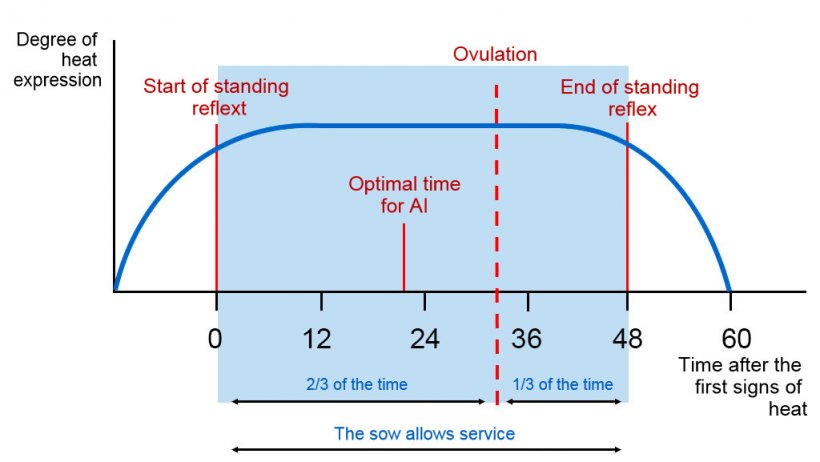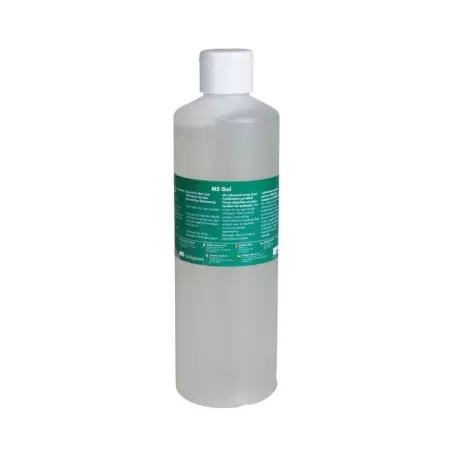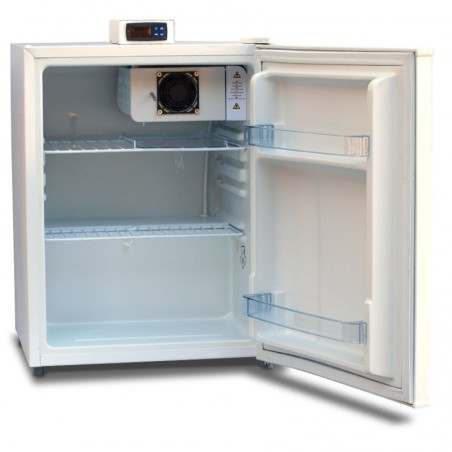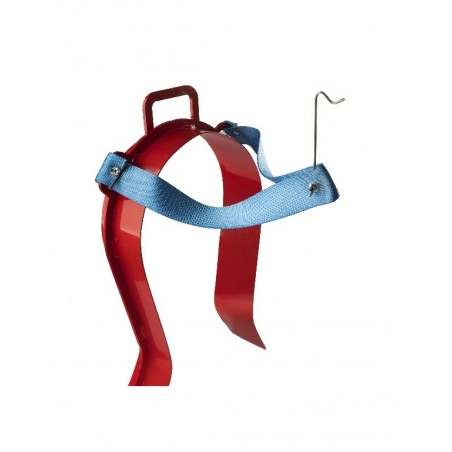On farms we find different established insemination guidelines, some with more complicated procedures (with morning and afternoon heat checking), while others have simpler guidelines (morning heat checking and inseminations every 24 hours). Both protocols can be executed by performing the first insemination immediately or after a waiting period. There is no obvious advantage of one system over the other, since it is possible to see very good and very poor results on farms with any type of protocol.
"The best system is the one that works"

Often times it is not the insemination guidelines (when to get the semen inside the sow) that isn't working properly, but rather the insemination method (the way to get the semen inside the sow) that is causing the problem. Only when an analysis is done on the farm that is showing evidence of a problem in the insemination guidelines would it be advisable to modify them.
If the simple system is used on a farm (inseminating when heat is detected and every 24 hours, while the sow is presenting the standing reflex) and it works, it should not be changed. However, if poor results are obtained with this system (for example, an 80% fertility rate and/or 1 piglet less than the farm should have), it should be changed to a more complex system, with morning and afternoon inseminations (with an interval of not less than 8h); with this being the most appropriate, but most labor-intensive. On the other hand, sometimes it is necessary to change the morning and afternoon system to one with an interval of 24h, since the intensive work schedule (only working in the morning) makes it almost impossible to inseminate with a gap of at least 8h between two inseminations, an interval considered necessary for the uterus to return to normal after an insemination.
Semen lives for about 24 hours inside the sow, and if inseminated for 3 days with an interval of 24 hours, the probability of fertilization will be high, since there are sperm available during a very high percentage of the estrus period, although generally the sow is fertilized only by one of these doses. Although theoretically a period of 72 hours is covered, before the second and third insemination the spermatozoa is approaching the limit of its viability and therefore there is a risk of error.
Failure can also occur if the fertilizing dose, the one given a few hours before or upon ovulation, fails because the semen is in poor condition or because the insemination was not done correctly and did not leave enough sperm in the uterus.
However, in the morning/afternoon / afternoon/morning insemination the spermatozoa from the consecutive doses will overlap inside the uterus, increasing the probability that there will be viable spermatozoa at the time of ovulation and, therefore, having a greater probability of fertilization, also avoiding the effects of a bad insemination or the use of bad semen, as long as the two consecutive doses are not from the same batch.
It has been known for many years, based on many scientific studies, that the length of estrus depends on the wean-to-estrus interval (WEI) and that a short WEI normally produces a long estrus and vice versa, a long WEI produces a short estrus. It is also known that the window of fertilization is much smaller than the estrus period (time in which the sow displays the standing reflex) since ovulation does not usually begin until the beginning of the last third of that period and occurs discontinuously for 6-8 h, The probability of fertilization is extended a little longer thanks to the viability of the oocytes, which is another 6 to 8 hours, so that the fertilization window is about 12-16 hours of the 35-90 hours that a heat can last (about 65 hours in a sow with a 4-day WEI), (Figure 1).

Figure 1. Graphical representation of the standing reflex, ovulation, and optimal AI timing in a sow with a 60h estrus. Source: Carles Casanovas.
It is therefore assumed that, in most sows, insemination during the first third of estrus will not result in fertilization since ovulation is still a long way off (longer than the sperm's 24 hour survival), Therefore, on many white sow farms, a delayed insemination system is used with the aim of wasting the least possible number of doses (the average number of doses in Spain is 2.7 - 2.8 per heat, while in Northern European countries it is 1.2 - 1.8, i.e. many sows are mated with a single dose per heat).
The insemination guideline with a waiting period, allowing 24 hours to pass for those sows that go into heat with a short WEI, or from morning to afternoon or from afternoon to morning for sows that have a WEI of 5-6 days, and inseminating every 8/16h, requires heat checking twice a day, good monitoring of the onset of heat, and a good record system that allows each sow to be assigned the appropriate protocol for her WEI.
A good waiting system adapted to each farm is the way to reduce to the the number of inseminations per estrus as much as possible, potentially reaching 1.5.
We should avoid inseminating more than 2 times; the number of third inseminations must be less than 20%. If it is not, this would indicate that the heat checking and/or the records of the beginning of heat are not being done correctly, or inseminations are being done late, in the period after ovulation in which there are still signs of heat.
Excess inseminations causes increased expenses and, more importantly, an increased amount of work; it can also produce vaginal discharge processes in those sows that receive inseminations after they have ovulated.
New techniques with high definition ultrasound equipment, which are capable of identifying the stage of the sow's cycle (insemination can be performed shortly before or upon ovulation), are scientifically very valuable methods, but with an important requirement for the person who performs it to be qualified and a high level of availability of personnel, since the monitoring of follicular growth, and therefore of the time of the estrous cycle, requires several observations each day, which makes it difficult to implement on the farm.
Establishing a proper insemination guideline, as well as performing a correct insemination method, are two indispensable points to achieve good fertility. In the following article we will go deeper into the volume and concentration of the seminal dose and its storage, which is of vital importance to perform a correct insemination.










